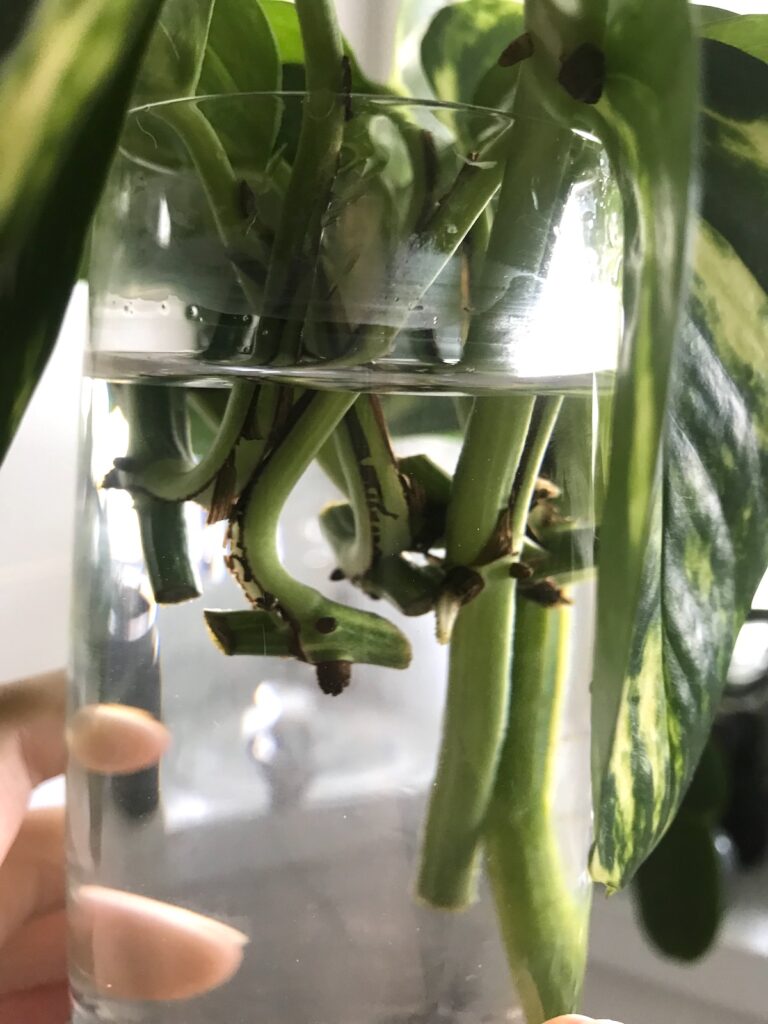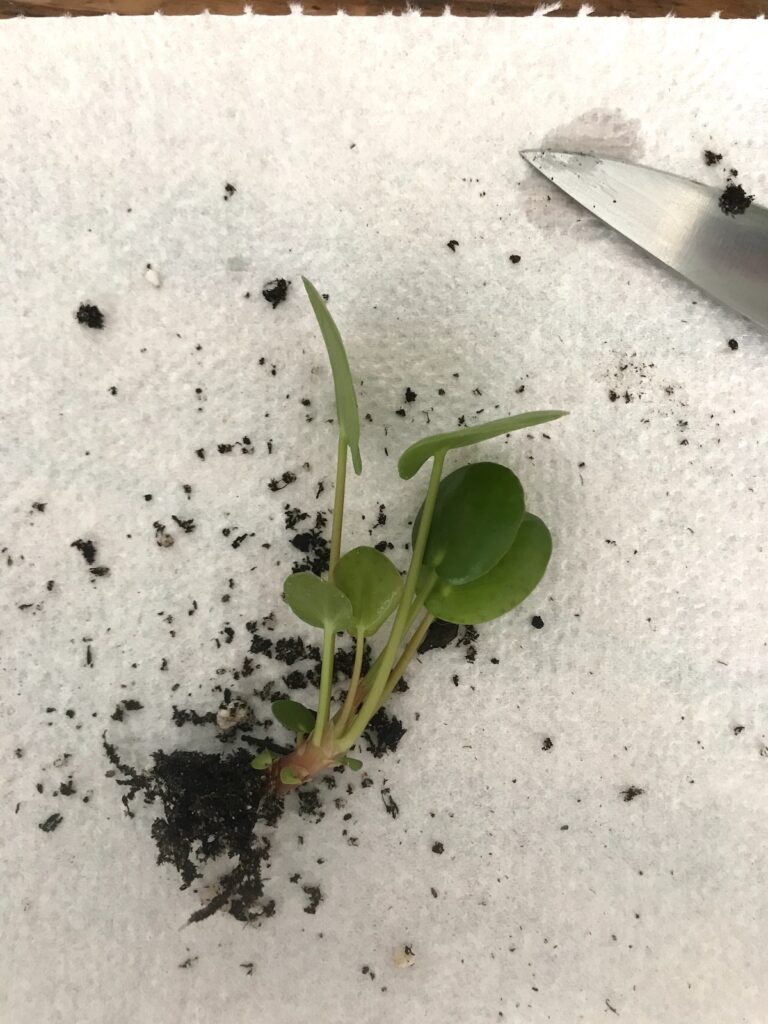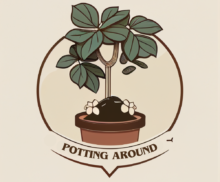After months of devoted care, your houseplants are thriving and developing into full grown plants. Next step in your journey as plant parent: propagation. There’s something oddly satisfying about starting a plant from scratch, seeing it evolve from a small plantlet to a mature plant, and repot it or give it away once it’s established.
It’s also an economic way to grow your plant collection or to have something to trade with plant lovers. Newly propagated plants also make for a cool gift if you have a birthday or a special occasion coming. In this article, we’ll share some tips about the best plants to propagate and how to do it from either cutting, root division or pups.
Stem, vine or leaf cutting propagation

Propagating from a stem, vine or leaf cutting is an easy method that consists in snipping off a stem with a few leaves and rooting it. Make a clean cut right below a node as the roots will grow from there.
You can either root the cutting in water to allow the roots to develop. This can take up to a few weeks depending on the plant. Roots develop faster in the dark, so you can place your cutting into an opaque container to accelerate the process. You can also opt to repot the cutting in soil straight away. In that case, be sure to maintain a good level of moisture to encourage root growth.
The mother plant should push a new stem or vine right next to the cut, so don’t worry about damaging your plant.
The following plants are easy to propagate from the stem, vine or leaf cutting following the method above.
- Pothos (Devil’s ivy)
- Arrowhead plant (Syngonium podophyllum)
- Wandering Jew (Tradescantia)
- Umbrella plant (Cyperus alternifolius)
- African violets (Streptocarpus sect. Saintpaulia)
- Nerve plant (Fittonia albivenis)
- Rosemary (Salvia Rosmarinus)
- Philodendron
- Prayer plant (Maranta leuconeura)
- Swiss cheese plant (Monstera deliciosa)
- String of pearls (Curio rowleyanus)
Root division propagation
Multi stemmed plants, like the Boston fern or peace lilies, can be propagate by division to create a new plant. Gently take the plant out the pot and remove any excess soil. This will help get a better view of the root system and make sure it’s healthy. Separate the stems where you want to divide the plant and use a clean knife to cut through the roots.
Don’t worry about hurting the plant, the roots will grow back just fine. You can divide the plant in as many parts as you want. Once you’re done, repot the new plants and keep the soil evenly moist until the new plants are established.
The following are multi stemmed plant that you can propagate by division.
- Boston Fern (Nephrolepis exaltata)
- Peace lily (Spathiphyllum)
- ZZ plant (Zamioculcas)
- Snake plant (Sansevieria trifasciata)
- Calatheas
Propagation from offshoot

Plants that produce “pups” or small offshoots like pilea peperomioides are even easier to propagate. Once the plant has reached maturity, it will sprout tiny plantlets at its base. Wait until they’re old enough to be removed from the mother plant and grow their own root system. Then, gently remove the soil around the pup, and make a cut with a clean knife to separate it from the main plant.
Like with stem propagation, you can either plant the pup directly into some soil if it’s big enough and already has some roots. You can also root it in water and wait for a few days/weeks until it develops its own system, then transplant into soil.
Here are a few plants that easy to propagate and that will sprout pups.
- Aloe Vera
- Spider plant (Chlorophytum comosum)
- Chinese money plant (Pilea peperomioides)
- Bromeliad
- Ponytail palm (Beaucarnea recurvata)
Propagate from all of the above
Last but not least, succulents are known for being particularly easy to propagate, which partly explains why they’re so popular at the moment. You can use any of the methods described above to propagate your succulents.
For instance, jade plants are super easy to grow from a stem cutting. Sanseveria, or snake plant, can be grown from scratch by cutting and rooting one of the leaves into soil or water. It also sprouts offspring which can be separated from the mother plant. Succulents like echeveria can be propagated super easily from the leaves. Separate a leaf from the main plant and simply place it on top of moist soil or root it slightly. A brand new plant will grow from the base of the leaf.





